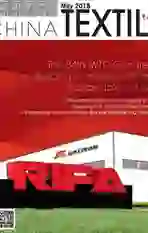letter
2015-12-31
Dear readers:
As we all know, the IWTOs 84th annual congress takes place in China on May 18-20 in the Year of Sheep, speaking volumes for the global wool pipeline, adding much value to the future of this natural, renewable and sustainable fiber, with 78 percent of which produced in IWTO member countries, 92 percent of the world production of wool tops, 90 percent of all worldwide fabrics containing wool all under the esteemed umbrella of International Wool Textile Organization (IWTO).
China became a member of IWTO in March, 1998 with China Wool Textile Association (CWTA) as the authorized representative of the National Committee in this world organization for wool and wool textile industry, characterizing the single location for all the stakeholders in the value chains from farm to fashion in a vivid picture of paddock-to-catwalk integration, presentation and advocation.
As one of the natural fibers, wool has been in uninterrupted favor not only by manufacturers, but also by consumers on the good and solid grounds that it has unique genetic factors, allowing for the quality fiber to stand firm and steadfast in competition with the other choices of fibers, either natural or synthetic. Merino Wool, renowned for being soft and fine, is loved by producers and consumers, and suited to high-quality apparel and top-end fashion houses. Additionally, there are other crossbreeds relative to Merino, with those wool qualities more suitable to interior applications, such as carpets, upholstery and furnishings. Apart from weaving process, the art of knitting also makes it possible for Merino wool to be expanded in its scope of application for knit apparel in both underwear and outerwear by adopting new technologies in four sectors: fully fashioned, flat knitting, circular knitting and warp knitting.
Knitting textile & apparel is a very important sector of Chinese textile industry with the wool knits growing significantly against the other fibers in the knit portfolios, driven by increasing market demand for high-end fabrics out of natural fibers, the wool in particular. 2013 witnessed over 100 billion dollars worth of knit textiles and apparel in export value, a milestone in the course of development in knitting industry in China while 2014 achievement still turned out to be quite a cynosure, in addition to domestic market of knit products spurred by consumption stimulus.
There are many highlights in the conference agenda that provides interesting programs organized by International Wool Textile Organization in cooperation with Chinas textile industry, including knitting sector that accounts for the bulk of wool textiles and fashion in China. A special salon for wool-knit innovation and versatility is also of great interest to stakeholders from provenance to performance, which is organized by China Knitting Industry Association and the Woolmark Company on May 21, to be part of the global endeavors to promote and increase wool values added to the industry-specific economic growth.
杂志排行
China Textile的其它文章
- Exhibition
- Teijin to provide polyester kimonos for Japan pavilion at Expo Milano 2015
- EMO MILANO 2015:A booster for Sino-Italian economic cooperation
- Maredimoda Trend Board spring summer trend forecasting 2017
- International Textile Fair hits a high note with its second season
- Expression of new era—reborn
